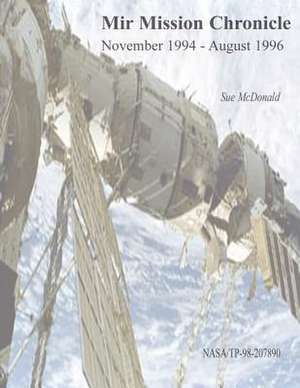Mir Mission Chronicle
Autor National Aeronautics and Administration, Sue McDonalden Limba Engleză Paperback
Preț: 112.79 lei
Nou
Puncte Express: 169
Preț estimativ în valută:
21.59€ • 23.46$ • 18.15£
21.59€ • 23.46$ • 18.15£
Carte disponibilă
Livrare economică 31 martie-14 aprilie
Preluare comenzi: 021 569.72.76
Specificații
ISBN-13: 9781493600304
ISBN-10: 1493600303
Pagini: 76
Dimensiuni: 216 x 279 x 4 mm
Greutate: 0.2 kg
Editura: CREATESPACE
ISBN-10: 1493600303
Pagini: 76
Dimensiuni: 216 x 279 x 4 mm
Greutate: 0.2 kg
Editura: CREATESPACE
